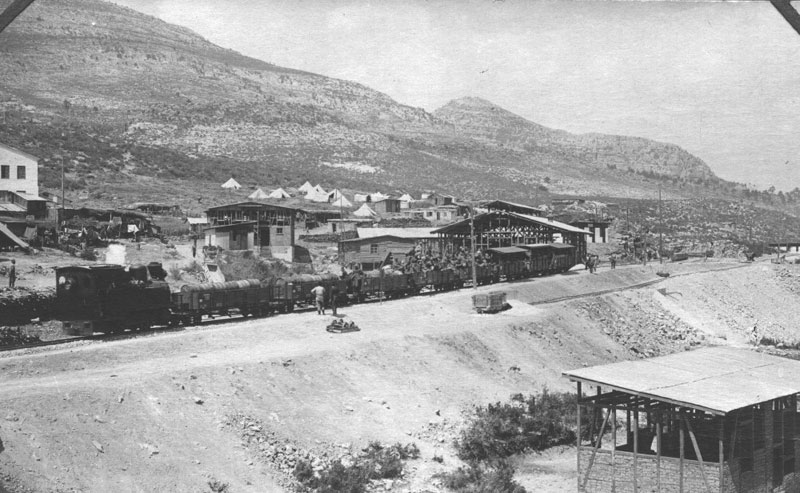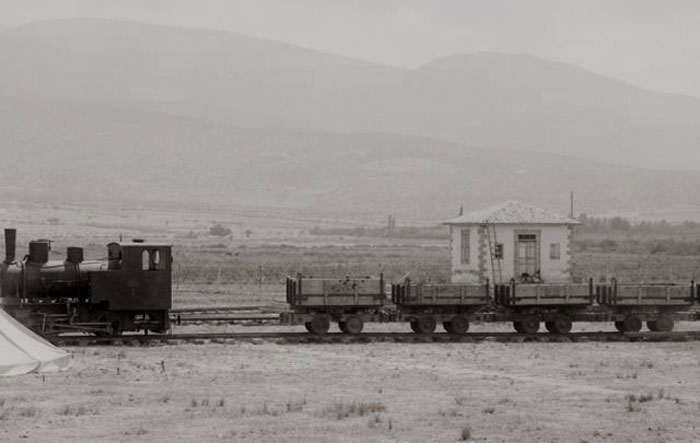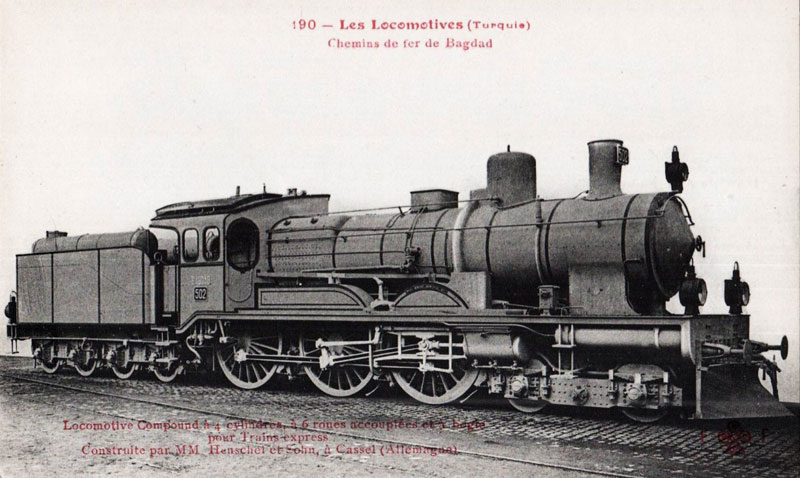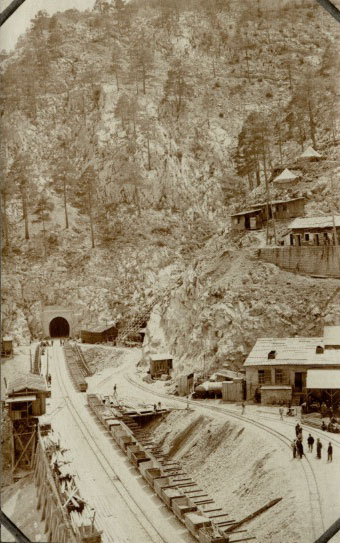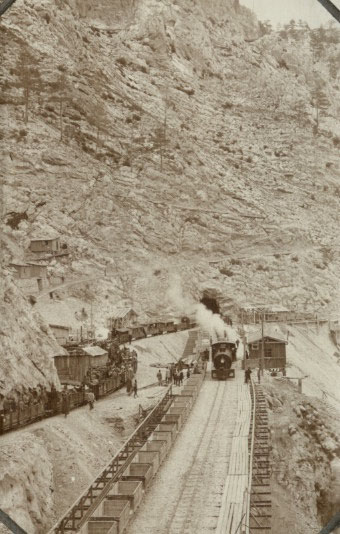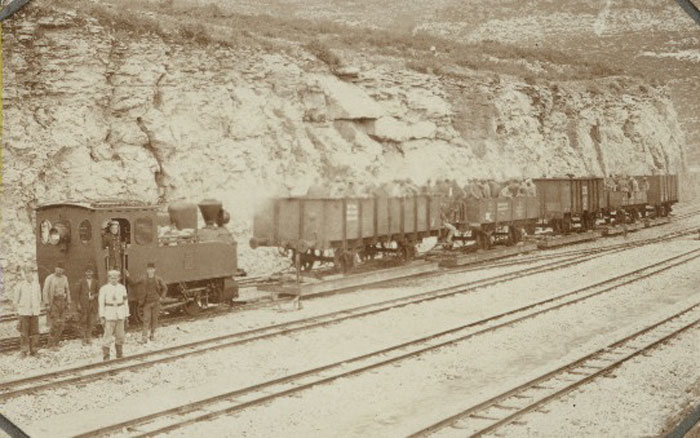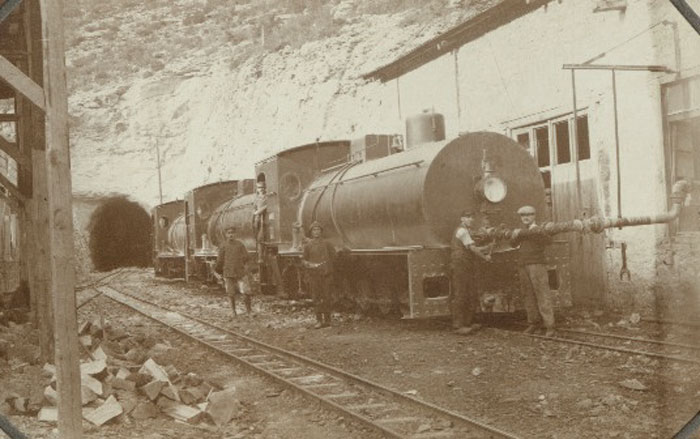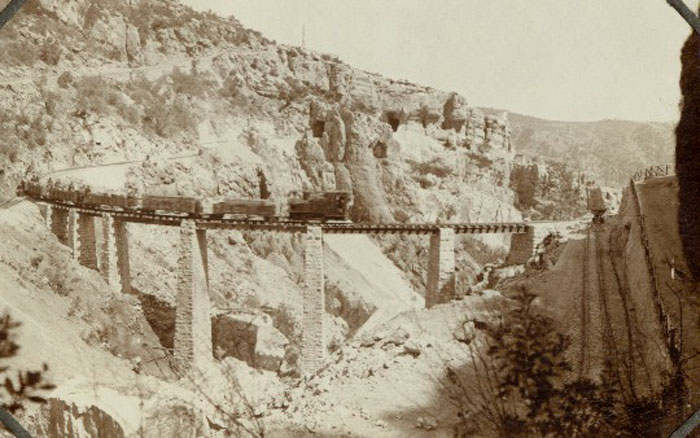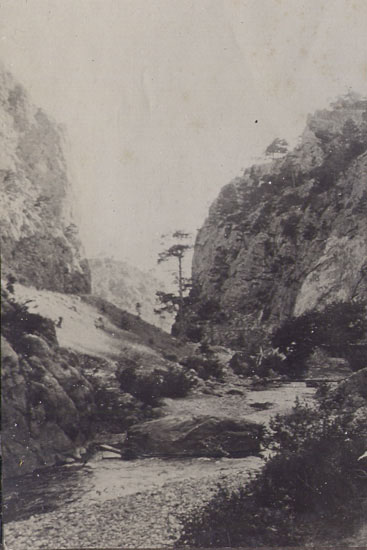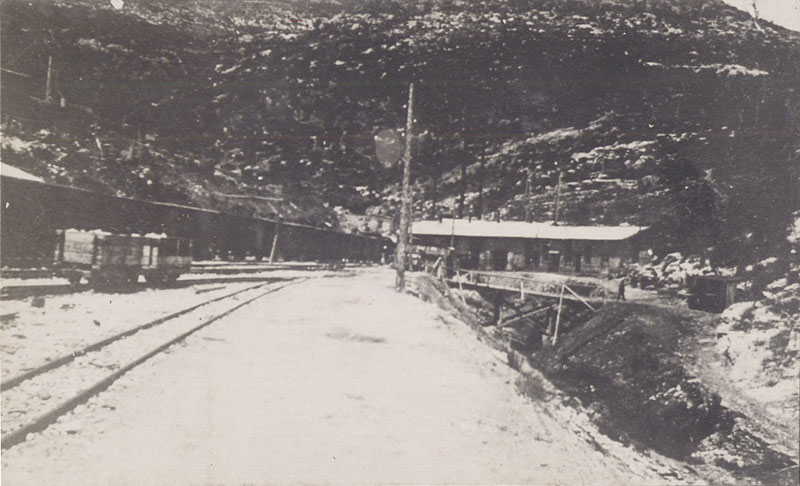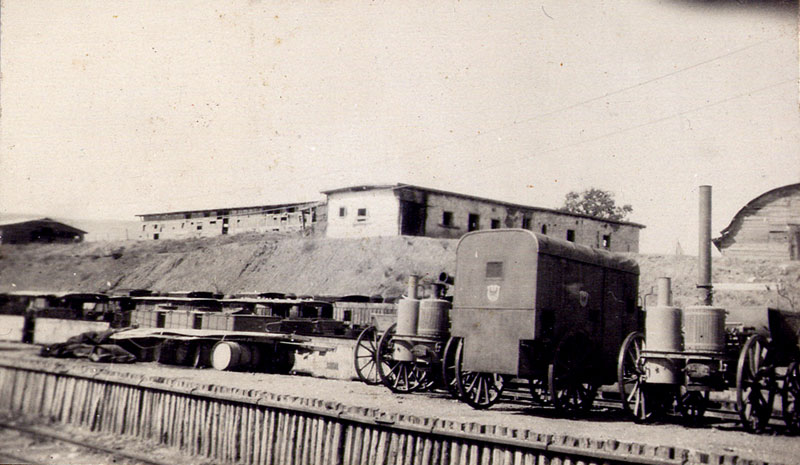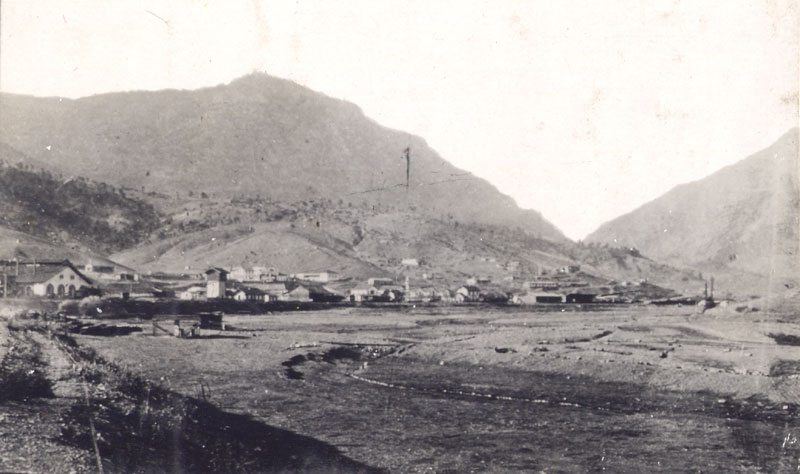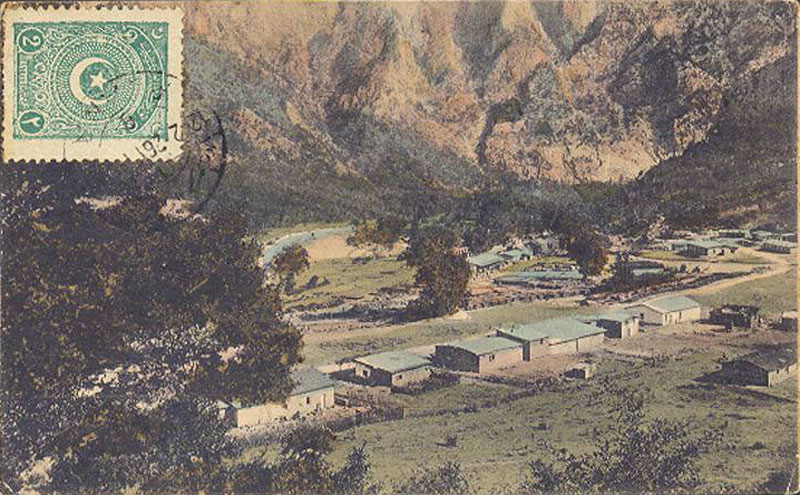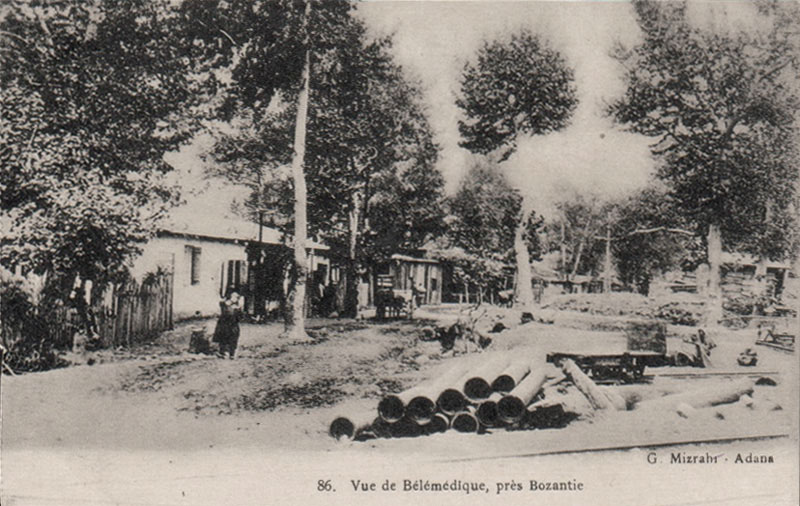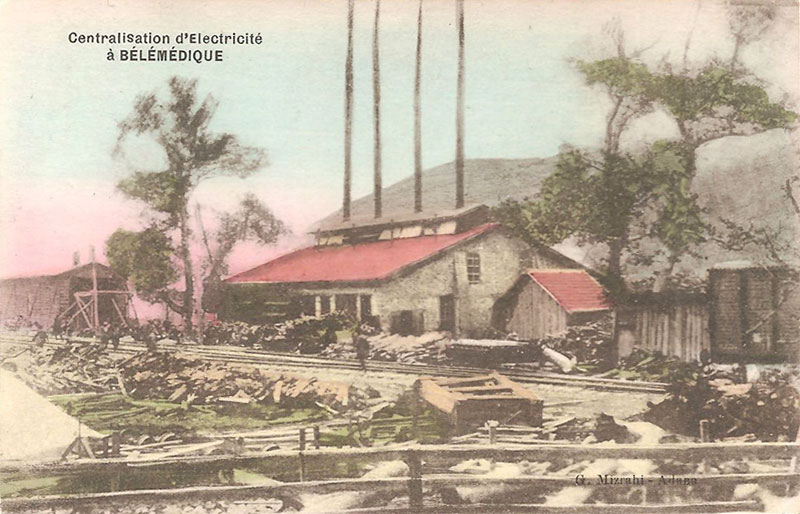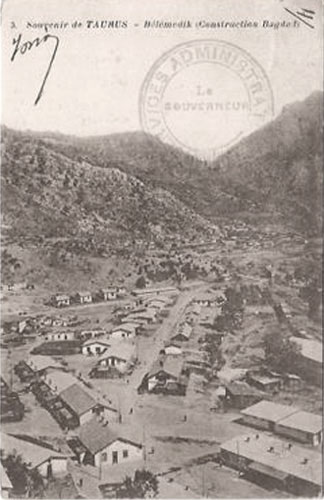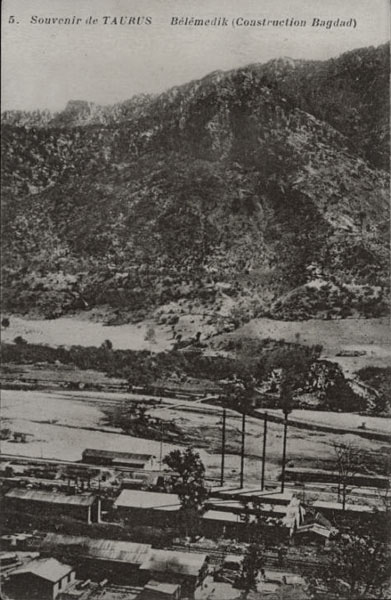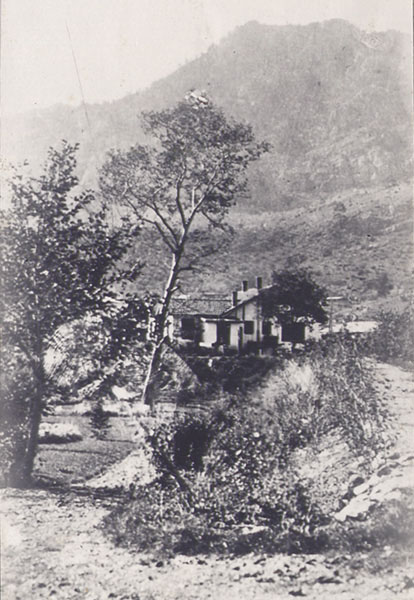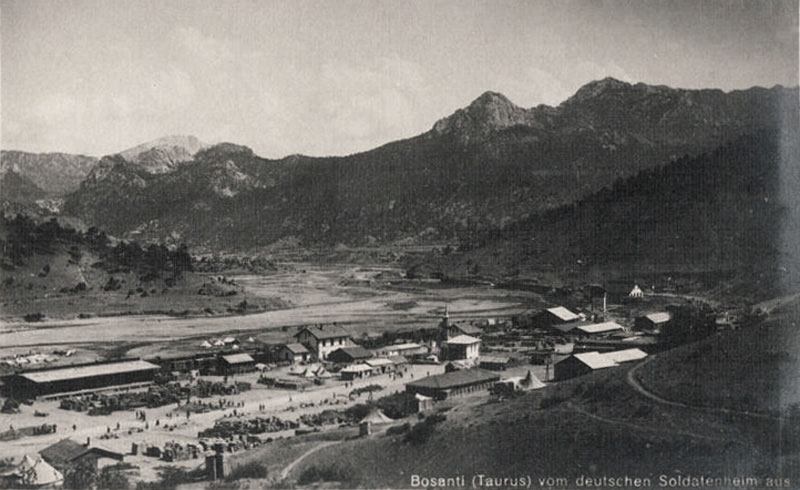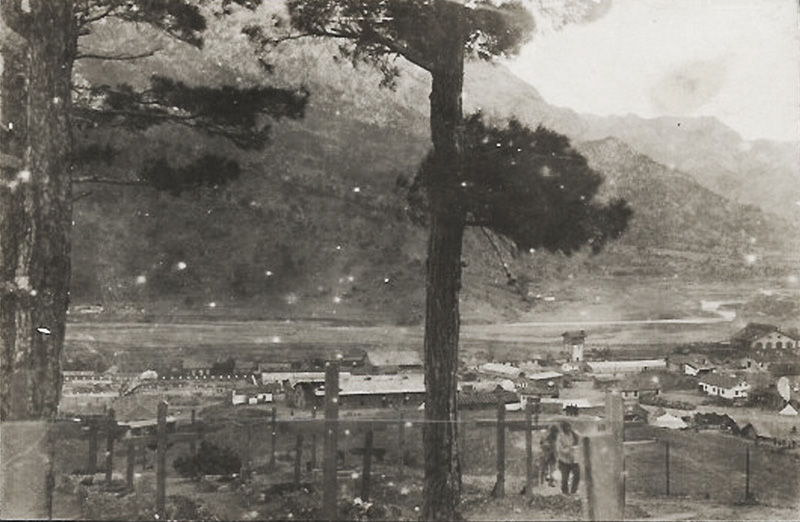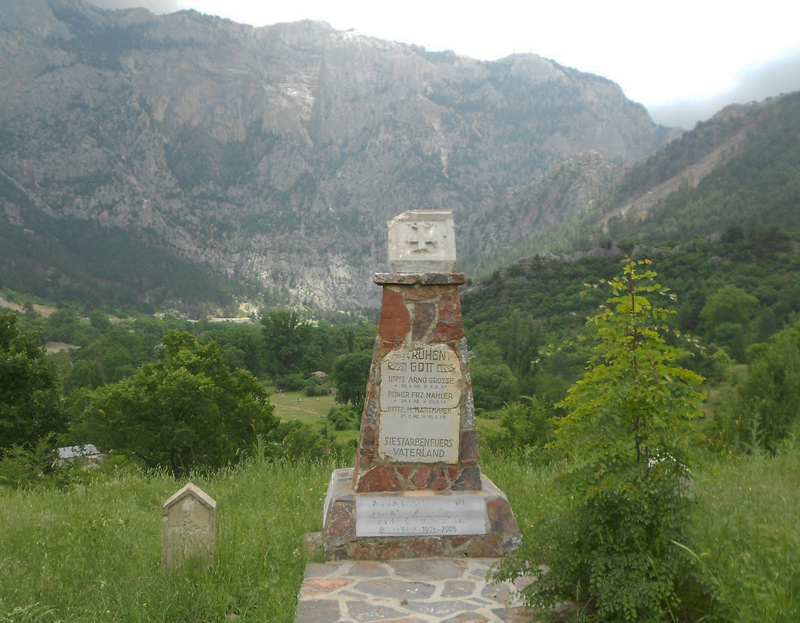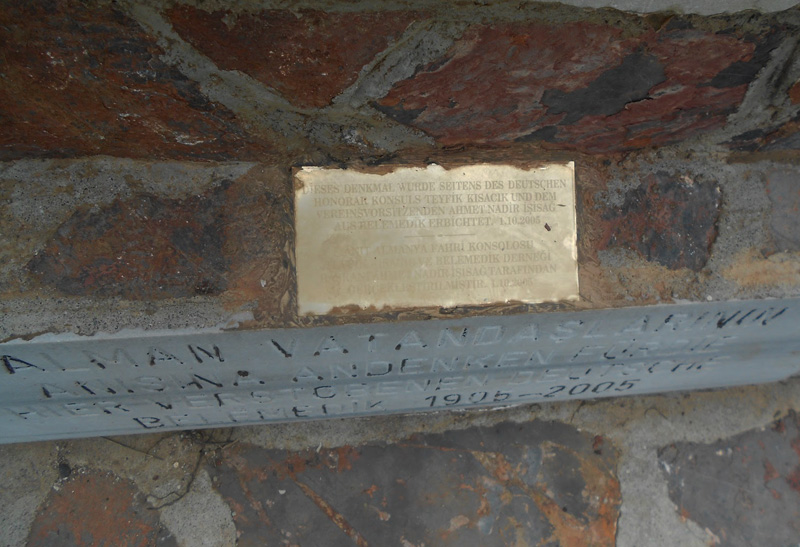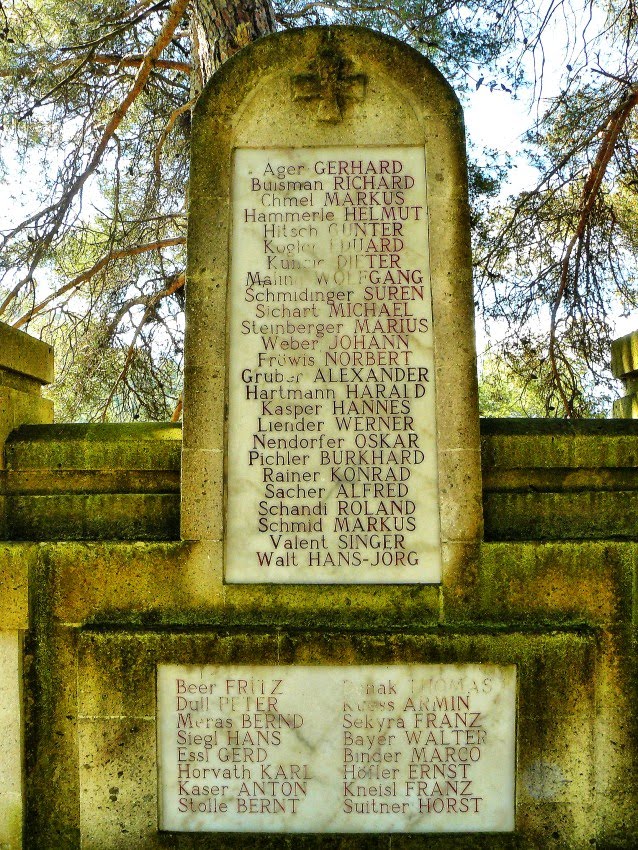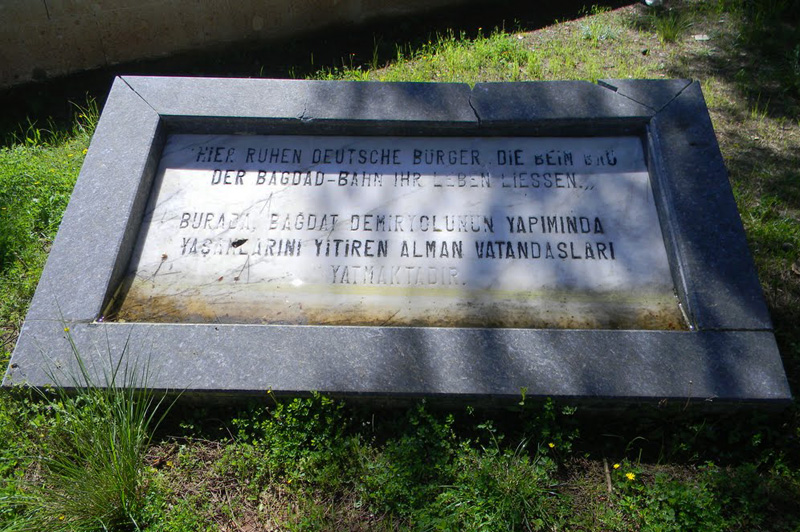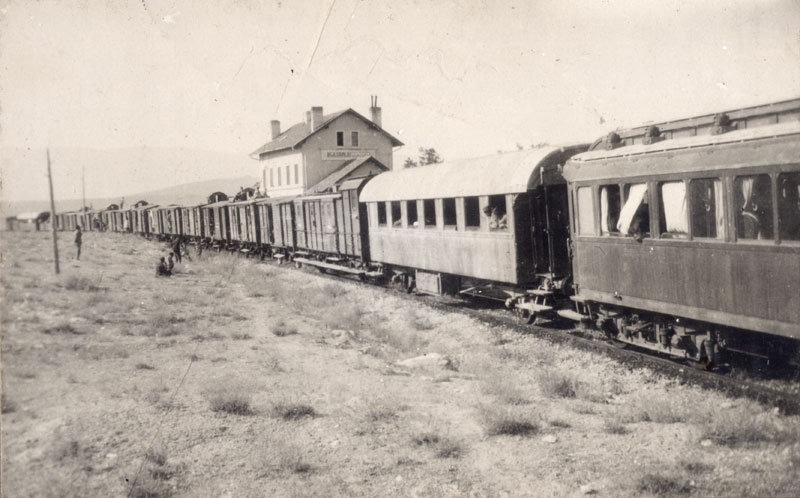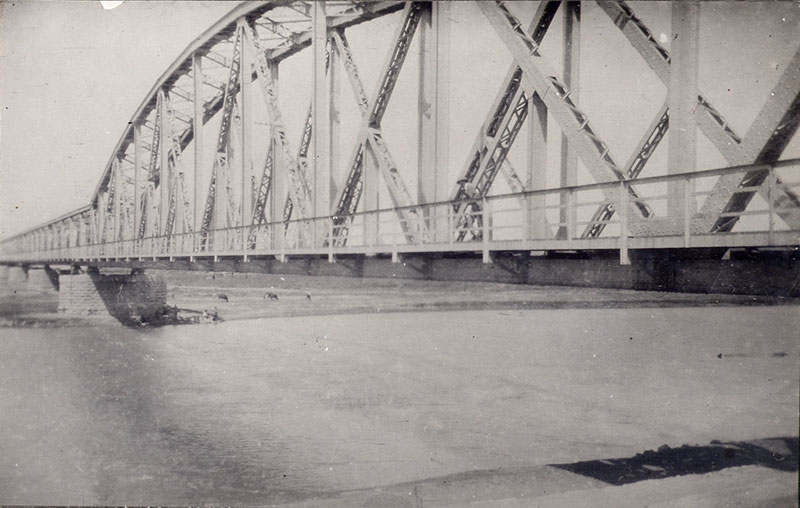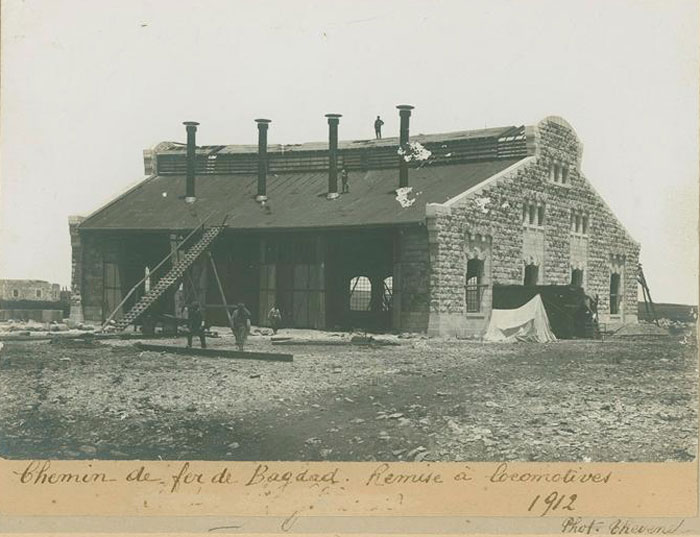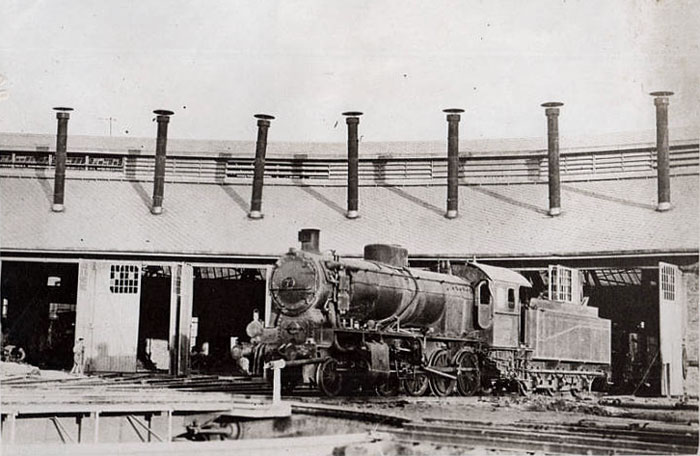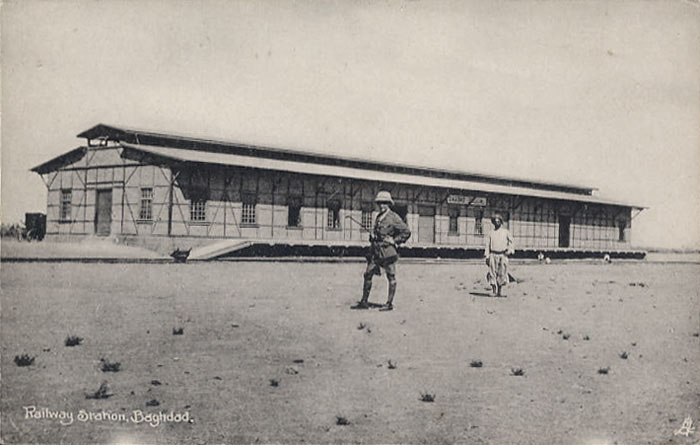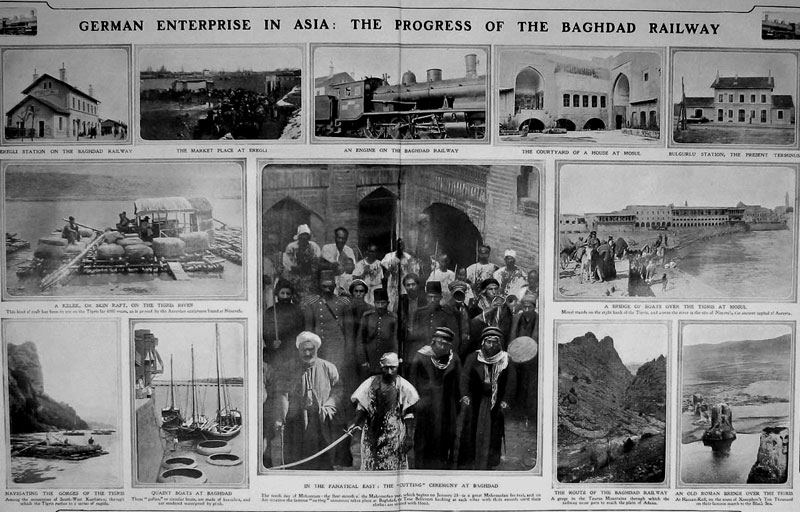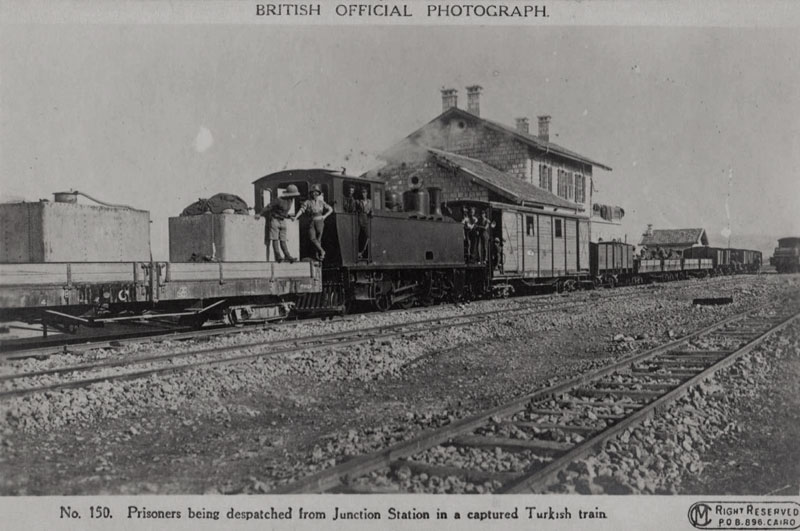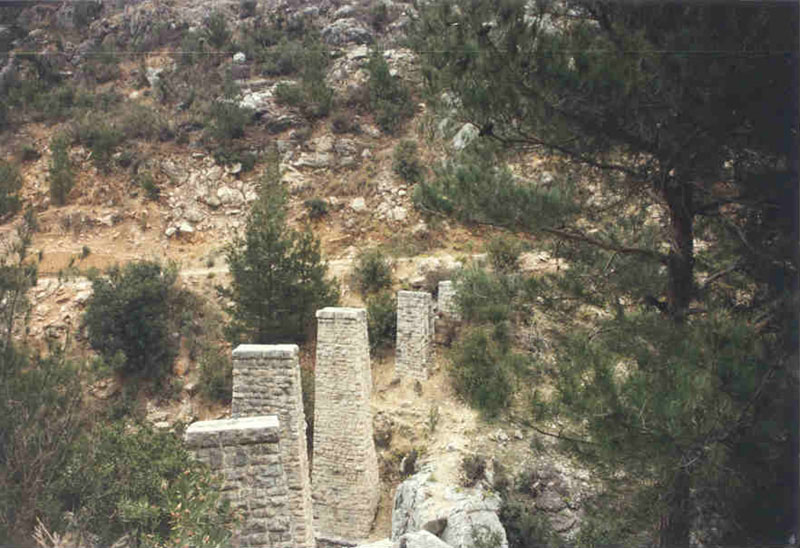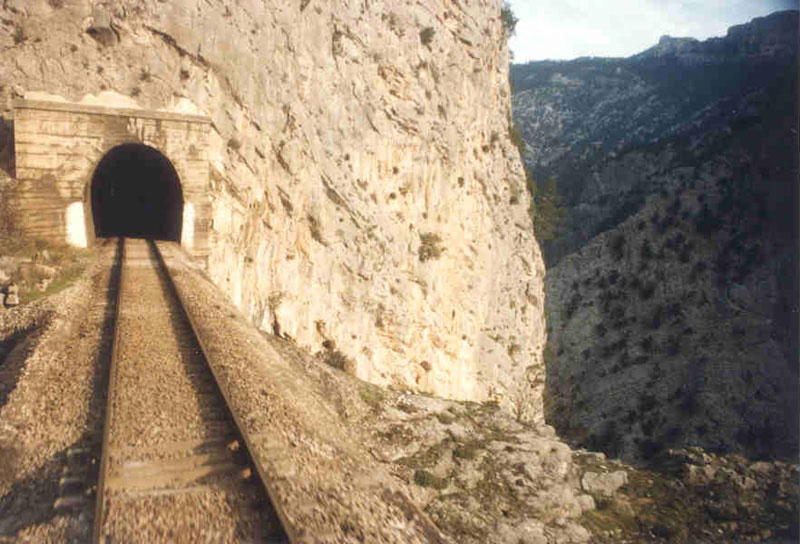|
|
A view of a narrow gauge train, carrying troops and supplies. The Henschel “Bagdadbau lok” is pulling a long string of typical WW1 German cars. |
|
|
|
|
A pair of overall views of Kuşçular, showing extensive narrow gauge tracks. The final platform looks complete. |
|
Carrier trucks used to transport standard gauge wagons over the narrow gauge track. The loco is a again a Henschel. |
|
Three fireless locos at the Hacıkırı water filling station, most likely Henschels. |
|
A section of a temporary narrow gauge bridge built near Hacıkırı [ location on a modern map]. |
|
The landscape of near the summit of the Cilician Gates, showing the tough landscape the railway builders had to work through. |
|
| A train emerging from one of the tunnels. |
|
British captured German war material such as kitchen wagons along the Baghdad railway. |
|
The village of Belemedik and below archive postcard views. |
|
|
|
|
|
|
The building serving as the British military headquarters near Belemedik. |
|
The nearby rail service town of Bozantı during WWI period. |
|
The German cemetery overlooking Bozantı. The cemetery survives in a highly damaged state. |
|
|
|
The list of buried at the German cemetery of Çamalan, Tarsus, Mersin Province. |
|
|
Baghdad railway train travelling on the way to Jerablus, near the present Syrian-Turkish border, and the minor station name is revealed to be “Boulgourlou” - January 16th 1909 edition of the Graphic reveals this to be the terminus station at the time.
 |
|
Adana railway bridge. |
|
|
Captured German built Turkish locomotives at Baghdad terminus railway station, 1917. |
|
|
|
|
Bridge piers of the former narrow gauge viaduct (see above). |
|
Between Hacıkırı and Belemedik, the line passes along the river gorge, high on one side in and out of numerous tunnels.
The Baghdad Railway, built from 1903 to 1940, was planned to connect the Ottoman Empire cities of Konya and Bagdad with a new 1,600 kilometres (990 mi) line through modern-day Turkey, Syria and Iraq. Funding and engineering was mainly provided by German Empire banks and companies, which in the 1890s had built the Anatolian Railway (Anatolische Eisenbahn) connecting Istanbul, Ankara and Konya. Completion of the Baghdad railway would have connected Berlin and Baghdad, from where the Germans attempted to establish a port at the Persian Gulf. The Ottoman Empire desired to maintain its control of Arabia and to expand its influence across the Red Sea into Egypt, which was controlled by Great Britain. The Germans gained access to and ownership of oil fields in Iraq, and with a line to the port of Basra would have gained better access to the eastern parts of the German colonial empire, bypassing the Suez Canal. The railway became a source of international disputes during the years immediately preceding World War I. Although it has been argued that they were resolved in 1914 before the war began, it has also been argued that the railroad was a leading cause of the First World War. Technical difficulties in the remote Taurus Mountains and diplomatic delays meant that by 1915 the railway was still 480 kilometres (300 mi) short of completion, severely limiting its use during the war in which Baghdad was occupied by the British while the already completed Hejaz railway in the south was attacked by guerrilla forces led by T. E. Lawrence. Construction resumed in the 1930s and was completed in 1940.
More info on the Baghdad Railways, 2. - Segment of an article on ‘The Diplomatic History of the Baghdad Railway - John B. Wolf, University of Missouri, 1936’.
More on Belemedik history, 2. |
